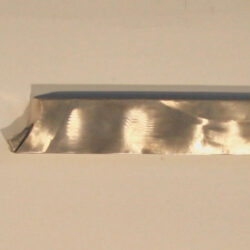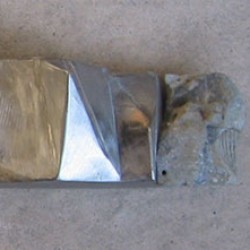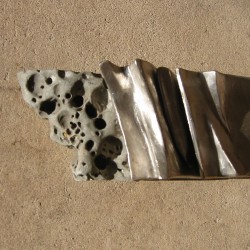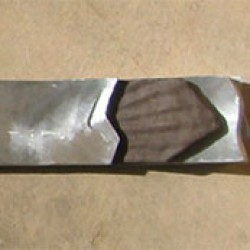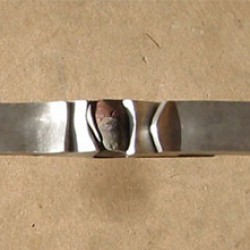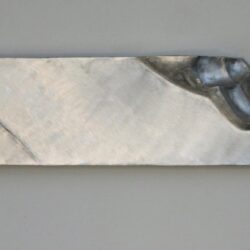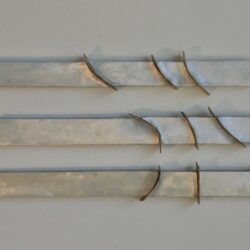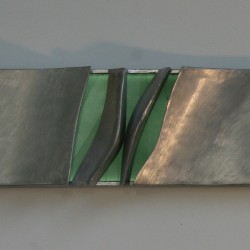- Frieze 1
- Frieze 3
- Frieze 4
- Frieze 7
- Frieze 8
- Cryoconite
- Frieze: Diasematon 1
- Frieze : Diasematon 2
- Empurologia: Frieze
The most evident common characteristic of these pieces, as implied by the name, lies in the realm of visual format. Their primary compositional feature is horizontality, and their being articulated largely on the vertical edges and the faces, leaving the top and bottom edges mostly planar. These features are far from arbitrary, but derive from the underlying sources.
More InformationThe huge tabular Antarctic icebergs that prowl the Southern Ocean are one prominent example from personal experience. When seen at a distance from shipboard, atmospheric thermal effects often split the image into segments that shift, separate, and rejoin constantly. Reference could also be to imagined slices through these formations, revealing features hitherto hidden. These might exist only in the realm of dreams or imagination, but that makes them no less real.
Some visualization techniques used by geologists also apply. To understand subterranean strata, one often resorts to sections, or slices through the earth existing only in the mind that expose synclines, anticlines, faults, batholiths, and other structures. Again, the ‘mind’s eye’ can visualize things it cannot directly see.
Core sample analysis– be it of ice or rock– is more concrete. To dissect and understand these hard-won archives, horizontality and segmentation are inevitable.
In addition to these, on a more general level, we live in a world replete with horizontal visual patterns. These extend from musical scores and the written word (in most cases) through architectural and engineering products of mankind to the earth itself in horizons and weather systems. Our eyes are inherently attuned to such modulations.
Not to be overlooked, of course, are the art historical references to sequential reliefs such as found on the Parthenon and so many other structures worldwide. The homophonic pun derivative from my glaciological leanings is pure fun.
